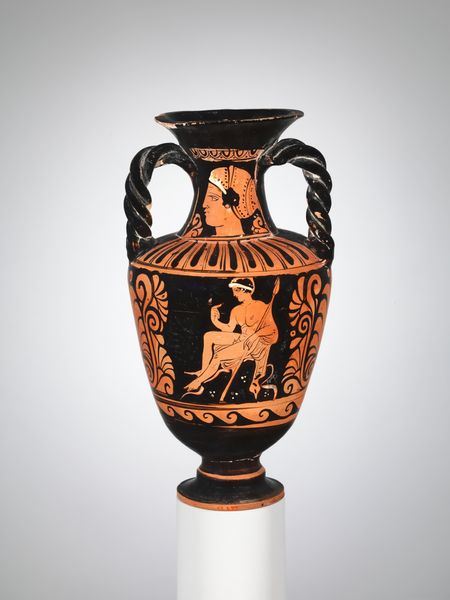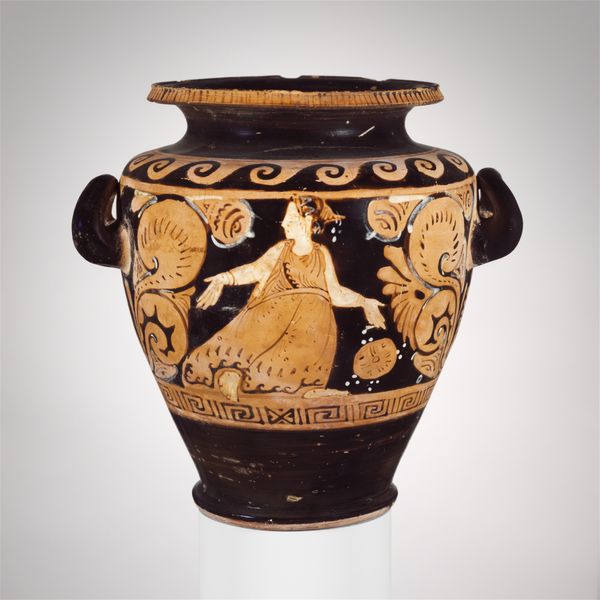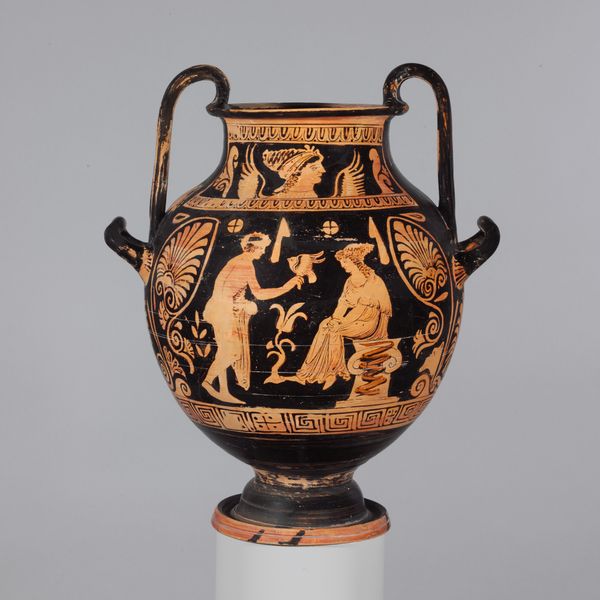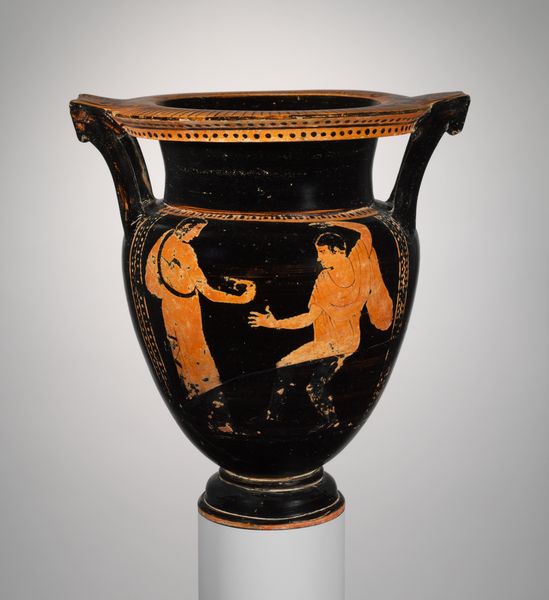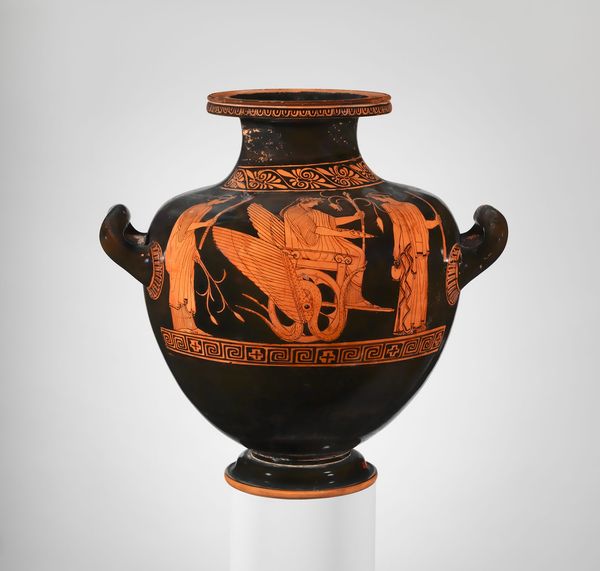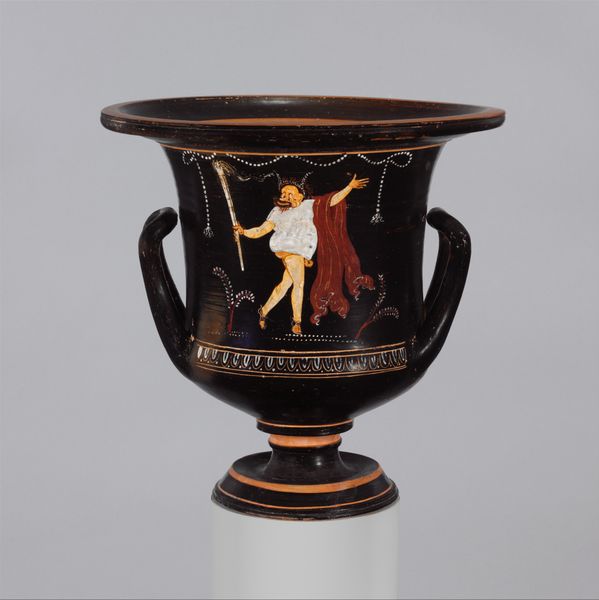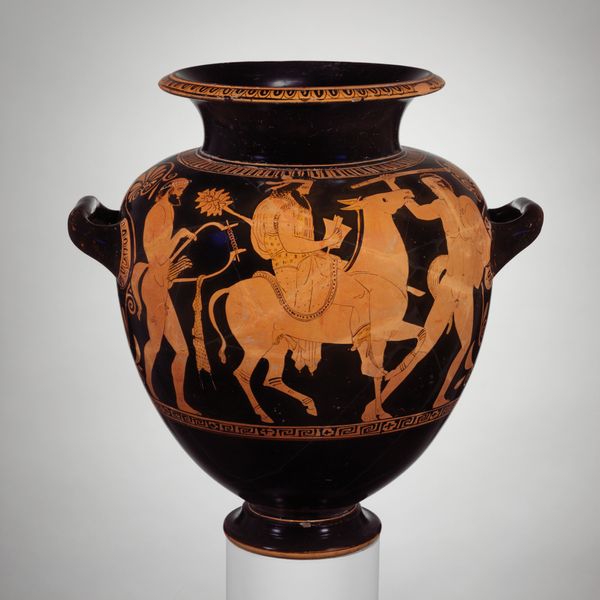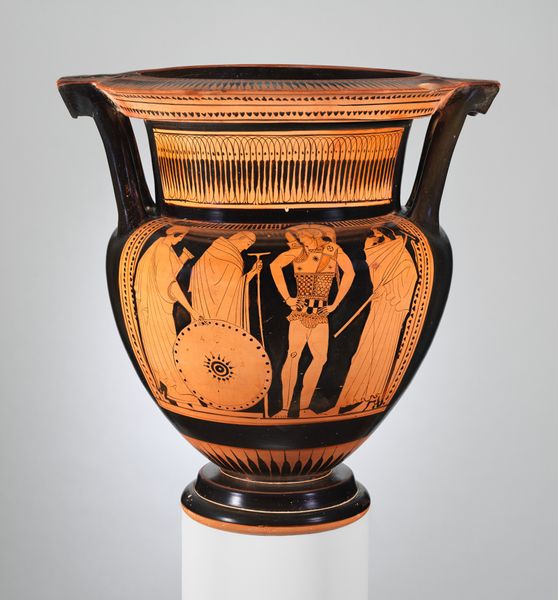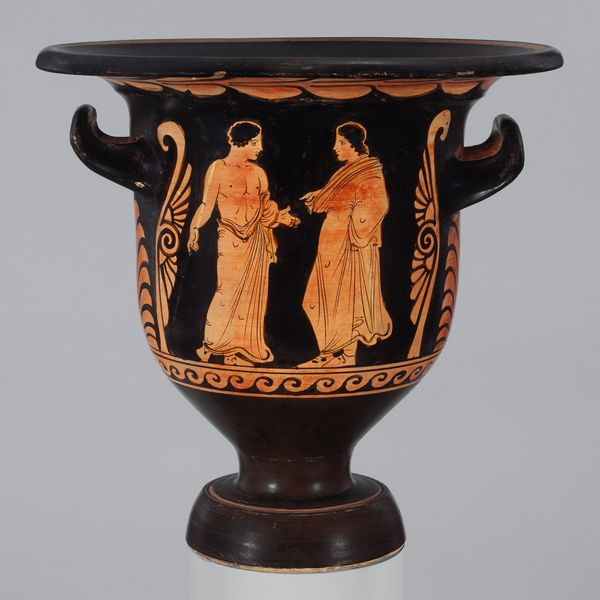
ceramic, earthenware
#
portrait
#
pottery
#
greek-and-roman-art
#
ceramic
#
vase
#
figuration
#
earthenware
#
ancient-mediterranean
#
ceramic
#
earthenware
#
history-painting
Dimensions: H. 12 1/16 in. (30.7 cm)
Copyright: Public Domain
Editor: So, this is a terracotta bell-krater, or mixing bowl, from 350 BC. It’s currently held at the Met. The scene depicted has an elegant feel to it. What do you see in it? Curator: The key for me is in understanding the krater not just as a visual object, but as a product of labor, embedded in a complex social system. The ceramic itself, the processes of its creation – the potting, the firing, the precise application of the slip to achieve the black-figure effect – all speak to a network of artisans. Do you think that labor is visible to us here? Editor: I hadn't considered the labor that went into making the krater itself, focusing more on the narrative scene. The act of creating something so precise out of clay definitely adds another dimension. Curator: Precisely. We also need to consider the "what" of the pottery. A mixing bowl suggests feasting, communal rituals, even trade networks to acquire the ingredients for these events. That gives context to its use that helps interpret the scene. Editor: So, it wasn’t just about aesthetics. It was very functional with socio-cultural relevance. Curator: Absolutely. Furthermore, think of the materials. The clay, where it was sourced, how the pigments were created, how the pot was fired; each step holds information about resources, trade, and technical knowledge. Even its current location in the Met shifts the meaning, elevating it from functional object to art object. How has it gone from daily use object to historical treasure? Editor: That's such a powerful perspective shift. Thinking about all the processes involved makes me appreciate the piece in a completely new way. Thank you. Curator: And understanding how materials, labor and class define that function for contemporary interpretations. Thanks to you for reminding us of how potent even ancient functional objects like this one are.
Comments
No comments
Be the first to comment and join the conversation on the ultimate creative platform.

